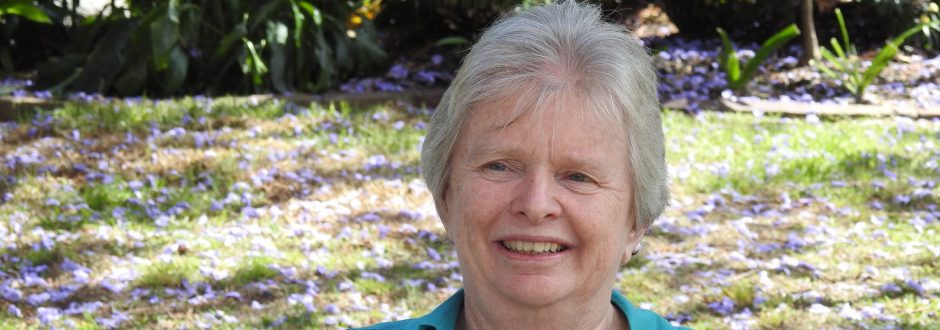As individuals we need to constantly offer an alternative to ugliness, darkness, hatred and violence, writes Good Samaritan Sister Clare Condon.
BY Clare Condon SGS
Meeting Claudio Pastro, the renowned Brazilian artist and architect, during my recent visit to Brazil as a delegate to the Communion of International Benedictine Women’s Conference, was a once-in-a-life time experience. Claudio acted as our personal guide as we explored the interior of the remarkable Basilica of Aparecida.
In 1999, Claudio was asked by the then Cardinal of Aparecida, Aloisio Lorscheider, to “think about the completion of the interior of the Basilica of Aparecida”, which is located halfway between Sao Paulo and Rio de Janeiro. The Basilica had been commissioned in the 1940s but never completed internally. After 14 years of extraordinary creativity, imagination and theological reflection, an interior of supreme post-modern beauty has emerged.
As he gently and evocatively introduced us to these works of art, Claudio shared his own faith and spirituality and a profound knowledge of Scripture and Church history based on his own study and his daily practice of lectio divina. Through the medium of line and colour, he has given future generations an exquisite story and catechesis of the Christian faith.
So what was it that made this experience so significant for me? The Basilica is a place of pure beauty; it’s described as a “theophanic place, a God place”. As the brochure says:
“It is a mystogogic place for its forms and colours, its materials, its celebrations, songs and prayers; its very walls lead us to the centre of the Mystery that we celebrate and contemplate, Jesus Christ, in order to nurture us wholly: spirit, body and soul. The structure of the Basilica differs from the world outside for it is a sacred place and its main function is to manifest the gratuity of life, gift of God. This space unites Heaven and Earth”.
This experience of mine was a contrast to so much of what is happening in our world at present. Much of this is ugly, dark, violent and polluted. I recall just a few examples. In Australia, there is the rejection and demonisation of refugees. In Brazil, there is the extreme poverty of so many citizens, the trafficking of homeless children and the street violence in cities like São Paulo. We read about political corruption in so many so-called Christian countries. In Syria, there is the genocide and hatred that has resulted in civil war. In Japan, there is the contamination of the Fukushima nuclear plant. And in so many of the world’s cities, there are the grey and dark concrete jungles where the din of constant noise and the drive to survive leaves little time or space to experience simple beauty.
Claudio Pastro also came to the monastery where we were meeting. He came to share with us the design of the sisters’ new church, a small church which is the centre of the community’s prayer and life. Again, his design and artwork are simple and beautiful, but profound. Here he showed as much devotion to his art as he did in creating the beauty of the basilica – a sign to me that one humble human being, gifted by God, can make a difference to the lives of many by seeking to bring beauty into being.
In Claudio Pastro’s art there is no place for the ugly, the dark, the violent or the polluted. In our own lives, we too can be a source of beauty for others. This experience led me to reflect on the power of one person to change the world, one encounter at a time.
In this world of ours there are millions more people devoted to beauty, goodness, gentleness and love. Theirs and our voices need to be heard. We need to constantly offer an alternative to ugliness, darkness, hatred and violence. Perhaps then the world can be healed and made whole: spirit, body and soul, and become what it is meant to be – the sacramental sign of pure beauty that is God.
